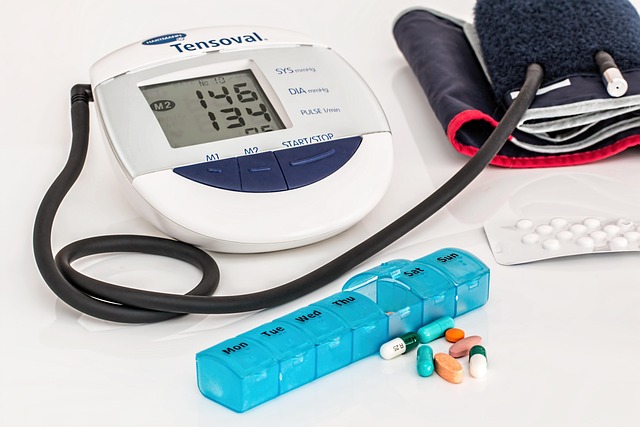PTSD treatment is vital for managing trauma-induced mental health issues, including intrusive memories and avoidance behaviors. Therapies like CBT, EMDR, and mindfulness interventions equip individuals with coping strategies, emotional regulation tools, and a restored sense of control, leading to improved quality of life. Creating safe therapy spaces, balancing individual and group sessions, and incorporating self-care practices are key components of effective PTSD treatment, fostering long-term healing and resilience.
Trauma recovery therapy sessions play a pivotal role in helping individuals navigate the aftermath of traumatic events. This article delves into the profound impact of trauma on mental health, highlighting the significance of PTSD treatment as a path to healing. We explore common techniques employed in therapy, emphasizing the creation of safe spaces for vulnerable survivors. Furthermore, it examines the dynamics of individual versus group therapy and offers strategies for integrating self-care into the healing process. Discover long-term benefits and continuous support options available for trauma survivors seeking to rebuild their lives.
Understanding Trauma and its Impact on Mental Health

Trauma, an intense emotional response to distressing events, can have profound and lasting effects on mental health. It’s important to understand that what constitutes trauma is subjective, varying from person to person based on individual experiences and resilience. When left unaddressed, trauma can lead to conditions such as Post-Traumatic Stress Disorder (PTSD), characterized by intrusive memories, avoidance behaviors, negative changes in thinking and mood, and heightened arousal. These symptoms disrupt daily functioning, making it challenging for individuals to live fulfilling lives.
In the context of PTSD treatment, therapy plays a pivotal role in helping individuals process and overcome their traumatic experiences. Through various therapeutic approaches, such as cognitive behavioral therapy (CBT) or eye movement desensitization and reprocessing (EMDR), individuals learn coping strategies to manage symptoms, regain a sense of control, and rebuild their lives. By creating a safe and supportive environment, trauma recovery therapy sessions empower individuals to confront and process their past traumas, fostering resilience and promoting mental wellness.
The Role of PTSD Treatment in Healing and Recovery

Post-Traumatic Stress Disorder (PTSD) treatment plays a pivotal role in the healing and recovery process for individuals who have experienced traumatic events. This specialized therapy aims to help people manage symptoms like intrusive memories, nightmares, and severe anxiety or fear that often accompany PTSD. Through various evidence-based approaches, such as cognitive processing therapy, eye movement desensitization and reprocessing (EMDR), and exposure therapy, patients can learn to process and integrate their traumatic experiences in a safe and controlled manner.
Effective PTSD treatment enables individuals to develop healthy coping mechanisms, enhance their ability to regulate emotions, and rebuild a sense of control over their lives. By addressing the underlying causes of PTSD and providing a supportive environment, therapy facilitates profound personal growth, improved relationships, and a higher quality of life. It empowers survivors to move forward from trauma, reclaim their well-being, and rediscover resilience.
Common Techniques Used in Therapy Sessions

Trauma recovery therapy sessions often employ a range of evidence-based techniques tailored to help individuals process and heal from traumatic experiences, particularly those suffering from Post-Traumatic Stress Disorder (PTSD). One common method is cognitive behavioral therapy (CBT), which focuses on identifying and changing negative thought patterns and behaviors associated with the trauma. Through structured exercises, patients learn to challenge distorted beliefs and develop healthier coping strategies.
Another effective approach is eye movement desensitization and reprocessing (EMDR). This technique guides individuals through a process of remembering traumatic events while simultaneously engaging in bilateral stimulation, such as side-to-side eye movements or tapping. EMDR facilitates the processing of distressing memories, reducing their emotional impact and helping patients achieve a more adaptive response. Additionally, mindfulness-based interventions are integrated into therapy to enhance present-moment awareness and promote self-regulation, enabling individuals to better manage symptoms of PTSD.
Creating a Safe and Supportive Environment for Healing

Creating a safe and supportive environment is paramount in trauma recovery therapy sessions, especially for those seeking PTSD treatment. This involves fostering a non-judgmental space where individuals feel comfortable expressing their emotions and experiences without fear of ridicule or rejection. Therapists play a crucial role in establishing this secure atmosphere by actively listening, validating feelings, and maintaining confidentiality. Such an environment encourages clients to open up about their traumas, enabling them to begin the healing process.
In PTSD treatment, consistency and reliability are key components of creating safety. Regular therapy sessions help individuals know what to expect, building a sense of predictability that can reduce anxiety. Additionally, incorporating therapeutic techniques like cognitive behavioral therapy (CBT) or eye movement desensitization and reprocessing (EMDR) within this safe space facilitates the processing and integration of traumatic memories. This, in turn, promotes emotional regulation and reduces the impact of flashbacks or nightmares, allowing for profound and lasting healing.
Individual vs Group Therapy: Pros and Cons

When it comes to trauma recovery, individuals often grapple with deciding between individual therapy and group sessions. Both approaches have their merits in the context of PTSD treatment. Group therapy offers a supportive network where people share experiences, fostering a sense of belonging and understanding. It can be particularly beneficial for those who feel isolated by their trauma and provides an opportunity to learn from others’ coping mechanisms. However, it may also trigger feelings of vulnerability or re-traumatization in some individuals, especially in open-discussion settings.
In contrast, individual therapy provides a more personalized and private setting. It allows for in-depth exploration of traumatic experiences at one’s own pace, addressing specific needs without the potential triggers present in group sessions. This approach is ideal for those who require a safer, more controlled environment to process their trauma effectively. Yet, it might lack the camaraderie and shared understanding that group therapy offers, potentially limiting the support system available to the client.
Integrating Self-Care Strategies into the Healing Process

In the journey towards healing from trauma, incorporating self-care strategies is an integral part of the process. It’s not just about attending therapy sessions; it’s about nurturing oneself holistically. Engaging in regular activities that promote relaxation and stress reduction, such as meditation, yoga, or even simple walks in nature, can significantly enhance one’s ability to manage PTSD symptoms. These practices create a sense of calm, allowing individuals to better process and integrate their experiences.
Self-care also involves setting boundaries and prioritizing personal needs. This might mean learning to say no to commitments that overwhelm, ensuring adequate sleep, and maintaining a balanced diet. By attending to these basic necessities, individuals can show up more fully for their therapy sessions, fostering a stronger therapeutic alliance and ultimately accelerating the healing process.
Long-Term Benefits and Continuous Support for Trauma Survivors

Trauma recovery therapy sessions offer more than immediate relief; they are a cornerstone for long-term benefits and continuous support for survivors. Through consistent engagement in PTSD treatment, individuals can develop effective coping mechanisms, enhance their emotional resilience, and regain a sense of control over their lives. This process allows them to reframe traumatic experiences, reducing the power these events hold over their present and future.
The benefits extend beyond individual growth. Access to ongoing support networks, including therapy groups or community resources, creates a sense of belonging and camaraderie among trauma survivors. This shared understanding fosters a supportive environment where individuals can openly discuss challenges, celebrate progress, and learn from one another’s experiences, ultimately accelerating their healing journey.
